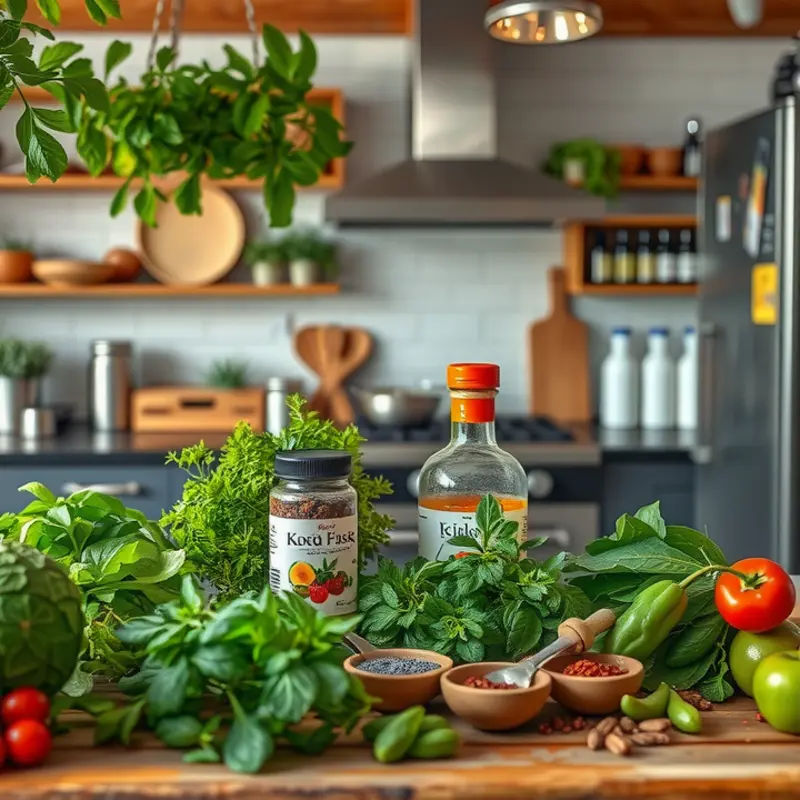Discover the world of natural savory flavor extracts and how they can elevate your home cooking. These extracts offer a plethora of flavors that enhance dishes while catering to dietary needs. With easy substitutions and flexible cooking solutions, incorporating these ingredients can transform meal preparation into a joyful and nutritious experience.
Understanding Natural Savory Extracts

Natural savory flavor extracts are essential components for enhancing taste while maintaining a health-conscious approach to cooking. Unlike artificial flavors, which are synthetically manufactured, natural extracts are derived from real food sources such as herbs, spices, vegetables, and even certain meats. This authenticity translates into a more nuanced and rich flavor profile.
A variety of natural savory extracts are available, each bringing unique characteristics to culinary creations. Vegetable extracts like mushroom or tomato offer umami richness, a depth crucial in building savory dishes. Herbal extracts, including garlic or basil, provide aromatic and pungent notes, enhancing the zestiness of any meal. Spice extracts like black pepper or cumin introduce warmth and complexity, ideal for spicing up recipes. Using extracts allows for a more potent flavor boost without overwhelming the dish with raw ingredients.
One of the most significant advantages of these extracts is their synergy with health-focused diets. They provide intense flavor without added sugars, fats, or sodium, making them ideal for reducing caloric intake while preserving taste integrity. For individuals pursuing a gut-friendly diet, as discussed in the foods for balancing gut flora, avoiding excessive salt and sugar is crucial. Savory extracts enable cooks to maintain this balance artfully.
Comparatively, artificial flavors often contain synthetic chemicals and preservatives, which some studies suggest may impact health over prolonged exposure. In contrast, natural extracts are minimally processed, retaining more of the original ingredient’s nutritional value. They are typically concentrated through methods such as cold pressing or steam distillation, minimizing nutrient loss.
In kitchen applications, natural extracts can be highly versatile. They enhance the base of soups and stews, layer complex flavors in marinades, and even elevate simple dishes like scrambled eggs. When incorporating them, aim for a balanced approach to avoid overpowering other ingredients. Typically, a small amount carries a punch—just a few drops are often sufficient.
Incorporating these extracts into your cooking not only broadens your flavor palette but also supports a healthier lifestyle. By relying on authentic, natural sources, meals become not only an artistic expression but a mindful choice for your well-being.
Simple Substitutions and Cooking Solutions

Substituting natural savory flavor extracts in your recipes not only enhances taste but also adds a nutritious twist. Knowing how to seamlessly integrate these extracts into your culinary repertoire can elevate dishes without compromising on health or taste. Here’s how you can make smart substitutions with savory extracts for a more flexible cooking experience.
When you’re looking to replace traditional flavoring agents like broth or stock, natural savory extracts can be your go-to choice. Consider using a mushroom-based extract to provide depth and umami to soups or stews. These extracts can concentrate flavors and are perfect as a substitute in vegetarian or vegan dishes where meat flavors are desired.
Incorporate a vegetable-based extract in place of salt when preparing dishes like risotto or pasta. These extracts offer not only flavor but also serve as a seasoning alternative, reducing sodium intake without losing taste. The key is to experiment with small amounts and adjust according to your preference.
For hearty casseroles or roasts, opting for a roasted garlic or onion extract can enhance the savory profile. These extracts provide a rich, aromatic quality, perfect for dishes that require slow cooking. They also save prep time and effort by eliminating the need for chopping and sautéing.
Soy sauce can sometimes overpower dishes with its strong saltiness. Instead, try using a blend of savory extracts including mushroom or seaweed extract. This combination can mimic soy sauce’s umami without the excessive sodium. Perfect for stir-fries or as a marinade, these blends introduce a subtle, yet complex flavor profile.
For those following a gluten-free diet, certain savory extracts serve as flour substitutes in thickening sauces. A small amount of a lentil or pea extract can add creaminess and body to sauces, ensuring they remain gluten-free while retaining their rich texture.
If you’re experimenting with enhancing the flavor of everyday ingredients, try incorporating a fermented extract like miso. Adding a teaspoon to dressings or dips can deepens flavor and introduce healthful probiotics. Such extracts serve as flavor balancers, perfectly harmonizing sweet and savory notes.
When seeking plant-based alternatives to fish sauce, a seaweed extract is a brilliant choice. It provides the same depth without animal products. It’s excellent for Thai or Vietnamese-inspired dishes, delivering a burst of umami while keeping the preparation plant-based.
Cooking with natural savory extracts opens up avenues for experimentation, ensuring each dish is flavorful and nutrient-rich. For more ideas on effective ingredient substitutions, visit the herbal sweeteners guide for tips that complement savory cooking. Embrace these natural ingredients to make recipes adaptable and diners delighted.
Final words
Natural savory flavor extracts offer home cooks a treasure trove of ingredients that cater to health-conscious cooking while enhancing flavor. By understanding the different types and their uses, as well as learning simple substitutions, you can create dishes that are both satisfying and nutritious. Embrace these extracts to explore new culinary possibilities and make meal preparation an enjoyable journey.







